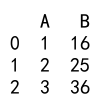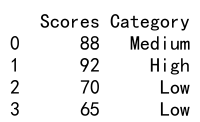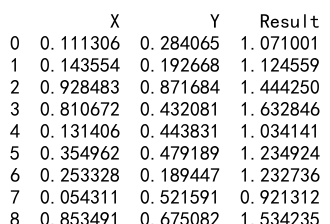Pandas Apply to Column
Pandas is a powerful Python library used for data manipulation and analysis. One of its core functionalities is the ability to apply functions to columns of a DataFrame. This feature is incredibly useful for data transformation, aggregation, and applying complex operations row-wise or column-wise. In this article, we will explore various ways to use the apply method on DataFrame columns, providing detailed examples and complete, standalone code snippets.
Introduction to Pandas Apply
The apply function in Pandas allows you to apply a function along an axis of the DataFrame (rows or columns). When applying a function to a column, you can transform the data in that column or create new columns based on the existing data.
Basic Usage of Apply
To start, let’s see a basic example of using apply on a single column to perform a simple operation:
import pandas as pd
# Create a sample DataFrame
df = pd.DataFrame({
'A': [1, 2, 3],
'B': [4, 5, 6]
})
# Function to increment by one
def increment(x):
return x + 1
# Apply function to column A
df['A'] = df['A'].apply(increment)
print(df)
Output:

Applying Lambda Functions
Lambda functions are small anonymous functions defined with the lambda keyword. Lambda functions can be used with apply for quick operations directly within the apply call.
Example: Squaring Values
import pandas as pd
# Create a DataFrame
df = pd.DataFrame({
'A': [1, 2, 3],
'B': [4, 5, 6]
})
# Apply a lambda function to square the values in column B
df['B'] = df['B'].apply(lambda x: x**2)
print(df)
Output:

Example: Adding a Suffix
import pandas as pd
# Create a DataFrame
df = pd.DataFrame({
'Name': ['Alice', 'Bob', 'Charlie'],
})
# Apply a lambda to add a suffix to each name
df['Name'] = df['Name'].apply(lambda x: x + '@pandasdataframe.com')
print(df)
Output:

Conditional Operations Using Apply
Apply can also be used to perform conditional operations within columns.
Example: Conditional Logic
import pandas as pd
# Create a DataFrame
df = pd.DataFrame({
'Scores': [88, 92, 70, 65],
})
# Function to categorize scores
def categorize_score(x):
if x >= 90:
return 'High'
elif x >= 75:
return 'Medium'
else:
return 'Low'
# Apply function to the Scores column
df['Category'] = df['Scores'].apply(categorize_score)
print(df)
Output:

Applying Functions that Return Multiple Values
Sometimes, you might want to apply a function that returns multiple values. In such cases, you can expand the results into multiple columns.
Example: Extracting Multiple Metrics
import pandas as pd
# Create a DataFrame
df = pd.DataFrame({
'Data': [123, 456, 789],
})
# Function to return multiple values
def extract_metrics(x):
return pd.Series([x, x*2, x*3])
# Apply function and expand results into multiple columns
df[['Original', 'Double', 'Triple']] = df['Data'].apply(extract_metrics)
print(df)
Output:

Vectorized Operations with Apply
For performance reasons, it’s often better to use vectorized operations provided by Pandas or NumPy. However, apply can be used for operations that are not easily vectorized.
Example: Complex Calculation
import pandas as pd
import numpy as np
# Create a DataFrame
df = pd.DataFrame({
'X': np.random.rand(10),
'Y': np.random.rand(10),
})
# Function to perform a complex calculation
def complex_calculation(row):
return np.sin(row['X']) + np.cos(row['Y'])
# Apply function row-wise
df['Result'] = df.apply(complex_calculation, axis=1)
print(df)
Output:

Pandas Apply to Column Conclusion
The apply method in Pandas is a versatile tool for data manipulation within DataFrame columns. It allows for the application of both simple and complex functions, including lambda functions, across columns or entire DataFrames. While vectorized operations should be preferred for performance reasons, apply provides a flexible alternative for more complex or custom operations that are not easily vectorized.
In this article, we have explored various examples of using apply to perform operations ranging from simple arithmetic to conditional logic and complex calculations. Each example provided a complete, standalone code snippet that can be run independently to demonstrate the functionality of apply in different scenarios.
 Pandas Dataframe
Pandas Dataframe